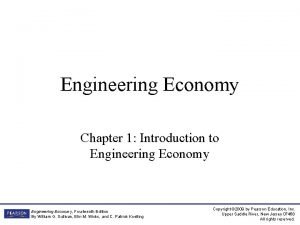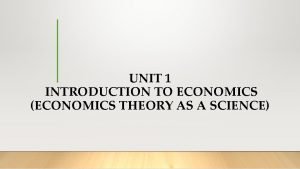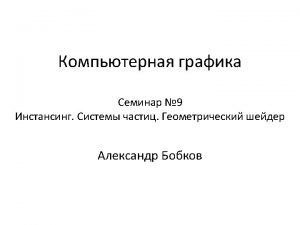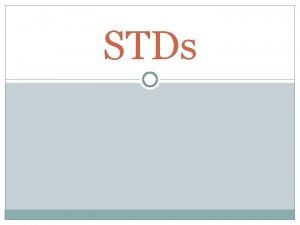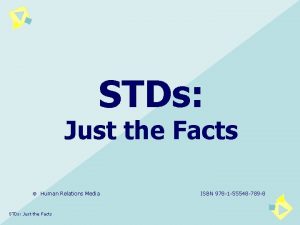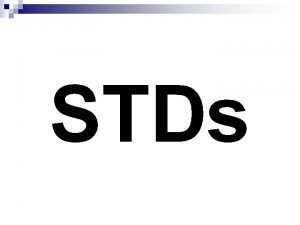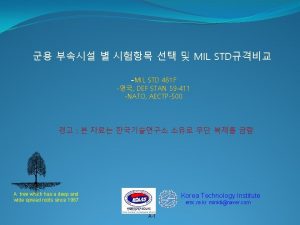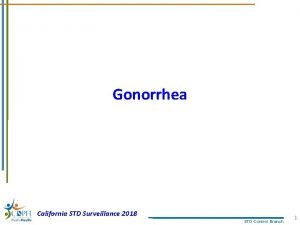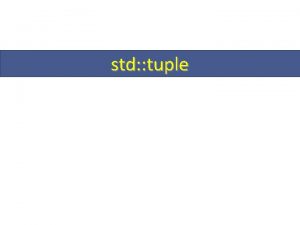Introduction to Economics Economics 11 th STD Economics



















- Slides: 19

Introduction to Economics

Economics 11 th STD Economics is divided in two parts: 1. Part A : Statistics for Economics (40 +10) 2. Part B : Indian Economic Development (40 +10) 50 marks each

Routine Activities Ø Some important terms, ü Consumer ü Producer ü Seller ü Service Holder ü Service Provider In all these cases, the person is called gainfully employed in an economic activity.

Non-Economic Activities Ø Housewives Ø A person doing a work for hobby like gardening, fishing, painting and so on. Ø Work done for charity. Ø Work done for personal satisfaction

Economics Ø What is Economics? “The study of mankind in the ordinary business of life. ” - Alfred Marshall In other words, Economics is the study of how people choose to use resources. OR Economics is the "study of how societies use scarce resources to produce valuable commodities and distribute them among different people. "

Definition of Economics “Economics is the study of how people and society choose to employ scarce resources that could have alternative uses in order to produce various commodities that satisfy their wants and to distribute them for consumption among various persons and groups in society. ” “A science that studies human behaviour as a relationship between ends and scarce means which have alternate uses. ” Robbins

Economics in our life Ø Some Examples, ü Pocket Money ü Family Budget ü Country financial budget What will happen if the current prices go up?

Why Economics? ØScarcity is the root of all economic. For Example, ü The long queues at railway booking counters ü Crowded buses and trains ü Shortage of essential commodities ü The rush to get a ticket to watch a new film, etc. Ø Reasons of Scarcity are, ü Limited availability of resources ü Alternate use of same resource These all are the economic problems.

Components of economics Ø Consumption: Consumption is the process of using up utility value of goods and services for the satisfaction of our wants. Ø Production: Production is the process of converting raw material into useful things. (Things become useful as they acquire utility value in the process of production Ø Distribution: Distribution is the process of distributing the national income or the total income according to the requirements. This income is distributed among those who have worked as agents of production

Statistics for Economics Why do we need statistics in economics?

Statistics for Economics Ø There are many other special studies that are required nowadays for any country. Like, Ø Poverty Ø Unemployment Ø Growth rate etc. For these studies it is required to know more about economic facts which is called data. This data is further analyzed to understand the problems and to form policies. To address such social questions any economist would use statistics as a tool for planning.

What is statistics? Ø For a layman: store of quantitative information Ø It is quantitative information and quantification of facts and findings. Ø It is defined both in ü Singular sense ü Plural sense.

Statistics Plural noun Ø Numerical facts collected systematically (Data). OR Information in terms of numbers or numerical data. Ø For example, ü Population statistics ü Employment statistics ü Public expenditure etc. Singular noun Ø Science of Statistics or Statistical methods. Ø It refers to techniques or methods relating to ü ü ü Collection of data Classification of data Presentation of data Analysis of data Interpretation of data

Statistics – Plural noun Ø Definition: “Statistics are numerical statements of facts in any department of enquiry placed in relation to each other. ” Bowley “By statistics we mean quantitative data affected to marked extent by multiplicity of causes. ” Yule and Kendall

Statistics – Plural noun Ø All statistics are data, but all data are not statistics. Ø For example, ü A cow has 4 legs or I have 2000 rupees in my pocket is not statistics. ü Birthrate in India is 18 per 1000 as compared to 8 per 1000 in USA is statistics.

Statistics – Singular noun Ø Definitions: “Statistics is the science of collecting, classifying and using statistics or statistical fact. ” “Statistics may be defined as the collection, presentation, analysis and interpretation of numerical data” “Statistics is the service which deals with the collection, classification and tabulation of numerical facts as a basis for the explanation, description, and comparison of phenomenon. ”

Statistics – Singular noun Ø Stages of Statistical Study: Stages Statistical Study Statistical tools 1 Collection of Data Census or Sample techniques 2 Organisation of Data Array of data, tally marks 3 Presentation of Data Tables, graphs, diagrams 4 Analysis of Data Percentages, averages, correlation and regression etc 5 Interpretation of Data Magnitude of percentage, average etc.

Importance of Statistics ü Quantitative Expression of economic problems ü Inter-sectoral and inter-temporal comparison ü Working out cause and effect relationship ü Construction of economic theories or economic models ü Economic forecasting ü Formulation of policies ü Economic equilibrium

Limitation of Statistics ü Study of numerical facts only ü Study of aggregates only ü Homogeneity of Data, an Essential requirement. ü Results are true only on an average. ü Without reference, Results may prove to be wrong. ü Can be used only by the Experts. ü Prone to Misuse. “Statistics are like clay by which you can make a god or a devil, as you please. ”
 Maastricht university school of business and economics
Maastricht university school of business and economics Non mathematical economics
Non mathematical economics Branches of economics
Branches of economics Scope of engineering economics
Scope of engineering economics Unit 1 economics
Unit 1 economics Introduction to engineering economics
Introduction to engineering economics Unit 1 introduction to economics
Unit 1 introduction to economics Std::uniform
Std::uniform Std wizard
Std wizard Std atomic
Std atomic Stl sort
Stl sort Male std warning signs
Male std warning signs Crabs std microscope
Crabs std microscope Curable stds
Curable stds Std promise
Std promise Site:slidetodoc.com
Site:slidetodoc.com Nasa std 6001
Nasa std 6001 Std crabs pics
Std crabs pics Sexually transmitted diseases
Sexually transmitted diseases Oral sex
Oral sex





